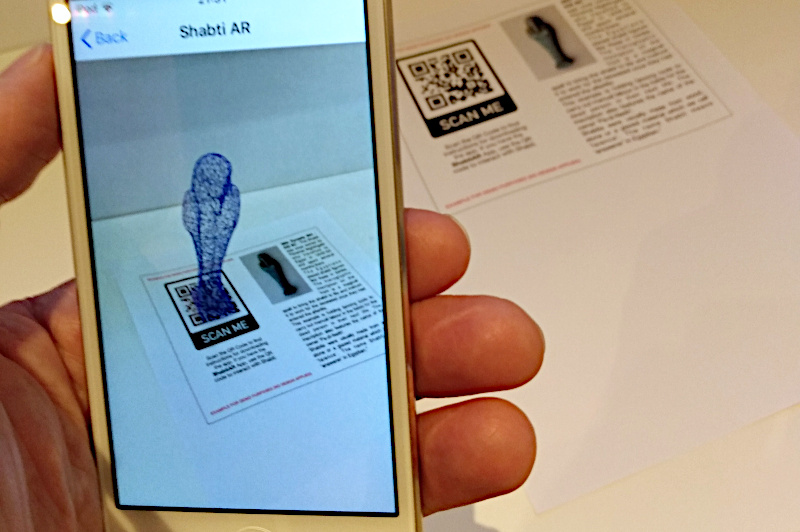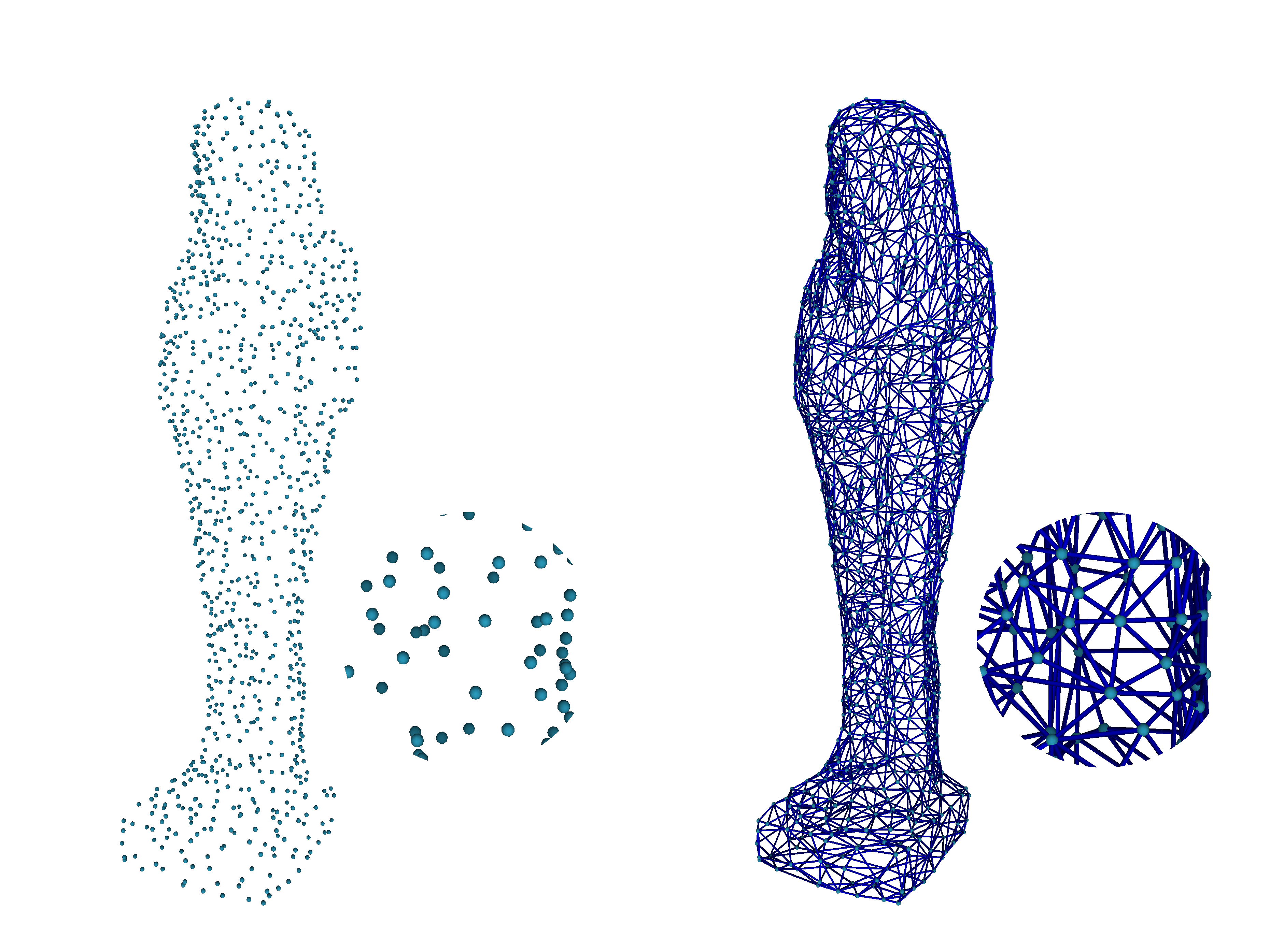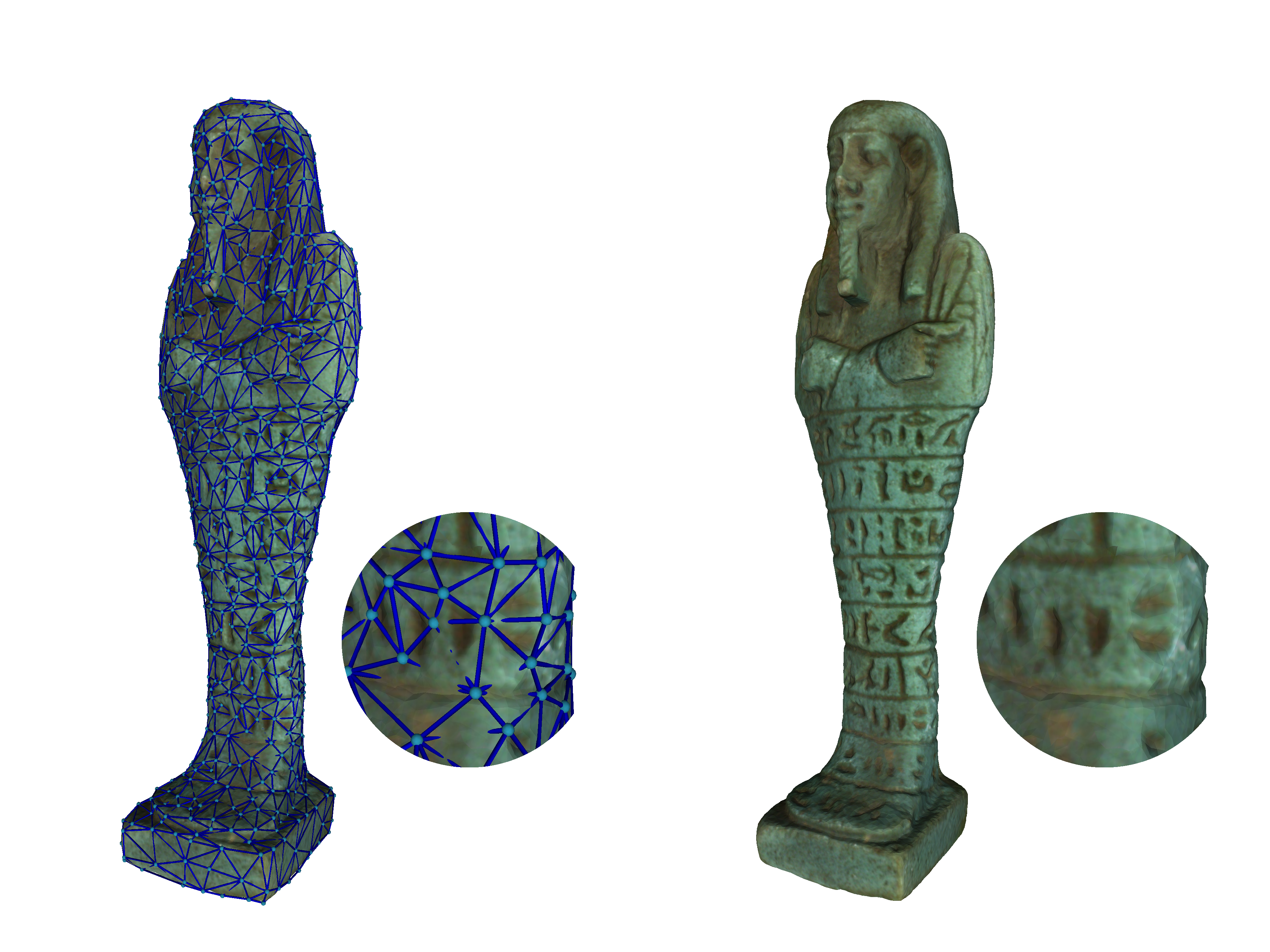Shabti Augmented Reality App
One of the original ambitions of the Virtual Cuneiform Tablet Reconstruction Project was to support virtual access to cultural artefacts. Augmented Reality (AR) provides a new way to interact with virtual 3D objects and to position them in the real-world.
We have created easy-to-use iPhone and Android AR apps that will be available shortly on the Apple App and Google Play stores.

The Shabti Augmented Reality App
This augmented reality app positions a virtual 3D model of an Egyptian ‘shabti’ statue; shabtis were special servant statues placed in tombs. The statue in the app is holding agricultural tools for farm work. It is over 2,500 years old and was once owned by Florence Nightingale who spent several months in Egypt in 1849-50. The hieroglyphic script on the statue is a magical spell to bring it to life and set it to work. This statue is number 7 of Liverpool World Museum’s 10 Objects from Ancient Egypt.
3D Virtual Shabti:
3D Models are made of points called vertices that define the shape of objects. Connected vertices form a surface from a mesh of triangles. The triangles can be shaded according to the colour of the object and the virtual lighting. This is called rendering. We make the 3D model look real by wrapping it in pixels from photographs of the original object.


About the Apps:
The iPhone apps were coded with Apple’s ARKit and were developed by James Mitchell, Software and Systems Engineering Research, Keele University. The AR resources and Android apps (coded in Android Studio with the ARCore library) were designed and developed by Tim Collins and Sandra Woolley.
Our thanks to Dr Ashley Cooke, Head of Antiquities at Liverpool World Museum for supporting our cuneiform work and inspiring the Shabti AR app.